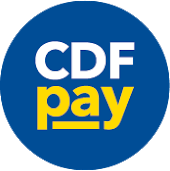Filter Content
Dear Parents and Carers
Another exciting day last Friday as we had a number of Dads, grandparents, uncles, aunts and siblings join us for "Special Person's Day"
The smiles and pride on the faces of our students as they shared their learnings was a joy to see.


















We remind you that every minute at school counts.
This week, as part of National Child Protection week, every school in Victoria will be focussing on Child Safety. As part of our commitment to Child Safety, we use this week every year to remind and re-teach our students about the following:
- Who are our safe people (Safety Network)
- Safe/unsafe feelings and actions
- Early warning signs – responses (feelings and physical) when we feel unsafe
- We have a right to body autonomy (body bubble/space)
- We can identify public and private body parts and name these
- When touch might be necessary (safe people hugging us or giving us a kiss, doctors, nurses, Allied Health professionals)
- The difference between secrets and surprises
In addition, we are also reviewing key policies - Child Safety and Wellbeing policy and Child Safety Code of Conduct.
You may like to view a recorded message from Bishop Greg and our Director of Catholic Education Mr Paul Velten.
If you wish to discuss this further or would like any clarification please contact Gab Verstraete (Child Safety Officer) gverstraete@stclaresofficer.catholic.edu.au
DISTRICT ATHLETICS
Last Thursday we had 67 Year 4-6 students travel to Casey Fields for the Regional Athletics Championships. The squad had been selected based on results from our House Athletics Carnival and P.E sessions throughout the year. The level of support our students displayed for each other throughout the day was exceptional and it helped lift our students to some incredible results.
In a nine-school competition, we ended up winning the overall championship thanks to an amazing number of podium finishes. In total we have 35 students progressing to the Division Championships thanks to 1st or 2nd place finishes in their chosen events.
Well done to our entire team, not only for their performance in their selected events but also for the way that they supported each other throughout the event. Good luck to all of our students who will compete at Division on September 18th at Casey Fields.
Milo’s Birthday Surprise Party
Foundation students enjoyed celebrating Milo’s birthday last Wednesday with a guest appearance from the birthday boy himself.
Milo and his friends are part of our literacy program – ‘Little Learners Love Literacy.’ This learning strategy has supported Foundations in their reading and writing progress by helping students to learn all of the letters and sounds in the alphabet. It was a great learning celebration!
Foundation Recount of Milo’s Birthday Surprise Party
Yesterday it was Milo’s birthday party. We made Milo his favourite food for his birthday.
We played some games for Milo’s surprise party. We played musical chairs, keep yuppy, pin the tail on the zebra and Milo taught us karate.
Milo had a great time at his party and so did we!











We are now taking enrolments for Foundation 2025. As a rapidly growing school we find ourselves currently at capacity at Years 1, 3 and 4 for 2024.
For those looking to enrol for Foundation or any other level in 2025 we suggest you submit your enrolment forms as soon as possible.
SCHOOL FEES
LOST PROPERTY
We have a significant amount of lost property, which includes drink bottles, at the office. If you child has lost any items please check at the office.
REPORTING AN ABSENCE
To report your child's absence please do so via PAM, email absent@stclaresofficer.catholic.edu.au or call 5940 6777
Here is the link for the St Clare's Parent Access Module (PAM)
St Clare's PAM
You username is the email address that you have registered with the school. The first time you log in we ask that you use the forgotten password feature to set your own password.
ALL parents must access PAM to receive up to date information and grant necessary permissions. Students will miss out on events if permission is not granted.
CDFpay is a secure, safe and efficient method for ordering and paying for items through school.
Below you will find instructions for setting up your CDFpay account both if you are an existing parent "already have a CDF pay account" or a new parent.
Here is the link to head to our school CDFpay shop St Clare's CDFpay Shop
How to Help Kids Stay Safe Online
Adapted from: https://www.esafety.gov.au/about-us/blog Office of the eSafety Commissioner
- Start the chat
It’s not possible to be at your child’s side every second of the day, so it’s important to talk with them about online safety issues to help develop their critical thinking and ability to make good choices. It’s also good to let them know they can come to you for help if they have any concerns. You may feel they know more about the latest technology than you do, but you have more life experience to guide them.
- With primary school aged children use online devices in the open living spaces at home to make parent supervision part of the expectation for your child.
- Take the opportunity to set some boundaries around when and where they can use devices like tablets, smart TVs and gaming consoles, to help limit potential tech tantrums — you could even fill in an Early Years Family Tech Agreement
- Screen free time before bed is important for good sleep. Consider charging devices in a central location at a regular time each night to allow an hour screen free before bed.
- While you are all at home more, it’s a great time to co-view and co-play with your kids, so you can understand what they are doing and experiencing online.
- Learn about the games, apps, social media and platforms they are using at The eSafety Guide, including how to protect their information and report inappropriate content or conduct.
- Use parental controls and safe search options
Parental controls can help block your child from accessing specific websites, apps or functions. They can also monitor your child’s use of connected devices and set time limits. But beware! You cannot always rely on them — they should be used in combination with other online safety strategies.
- Parental controls are available on most tablets, smartphones, computers, TVs and gaming consoles.
- You can also download family safety controls or buy robust filters out of the box.
- You can set up child-friendly search engines, or select safe search settings on digital devices, to help prevent your child from stumbling across inappropriate sites and content.
- Check smart toy settings
It’s surprising how many toys or devices can connect online these days, from drones and smart teddies to tablets and wearables. While they can be both entertaining and educational, they can reveal your child’s personal details and location — and allow other people to contact them without you knowing. You can help keep them stay safe by:
- setting strong passwords
- turning off location settings
- limiting the amount of personal information shared.
The eSafety Gift Guide has advice on what to check for and how to stay safe.
- Look out for unwanted contact and grooming
Unwanted contact is any communication that makes your child feel uncomfortable or unsafe, even if they initially welcomed the contact. It can come from a stranger, an online ‘friend’ or even someone they actually know. At worst, it can involve ‘grooming’ — building a relationship with the child in order to sexually abuse them.
You can help by:
- making sure their accounts are private — including chat functions on games
- encouraging them to delete requests from strangers and any contacts they don’t know in person
- checking in with your child as they use online devices in the open living spaces at home
- reporting and blocking anyone suspicious on a website or service
- remembering that if suspicious online contacts become aggressive or threatening you should contact your local police.
- Know the signs of cyberbullying
Kids who are bored by long periods at home can pick at each other, and that happens online too. So it’s important to keep an eye out for cyberbullying. It can include mean posts, comments and messages, as well as being left out of online group activities like gaming.
- Remember, when they are away from school, kids have less access to their usual support systems, including friends, teachers and counsellors.
- eSafety research shows that girls are more likely to be affected than boys and the person doing the bullying is generally someone they know from school.
- Watch out for signs such as your child appearing upset after using their mobile, tablet or computer, being unusually secretive about their online activities or becoming withdrawn.
- Cyberbullying can make social isolation worse and the longer it continues, the more stressed kids can become, impacting on their emotional and physical wellbeing.
What to do if your child is being cyberbullied
As parents, our first instinct may be to ban our children from social media, disable the wi-fi or turn off the data access. But this can actually compound the problem, making your child feel as if they’re being punished and heightening their sense of social exclusion.
There are four simple steps that can help minimise the harm:
- report the cyberbullying to the social media service where it is occurring
- collect evidence of the cyberbullying material
- if the material is still public 48 hours later, make a report to eSafety — we work with social media platforms to have the harmful content removed.
block the offending user.















